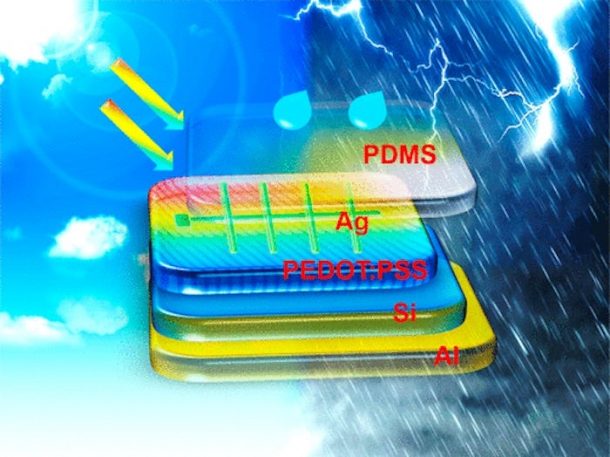No wonder solar energy is very useful but it has one major drawback which is its inability to function during cloudy weather. A team of Chinese engineers has overcome this flaw by developing a hybrid solar cell which can produce electricity from both sunshine and rain. It uses the triboelectric effect to harvest the energy from the movement of the raindrops on its surface. Triboelectric nanogenerators (TENGs) create charge from the friction of two materials when they are rubbed together. This is known as static electricity.
There can be many practical uses in harvesting energy from the movement or vibrations through clothing, car wheels, floor, or touchscreens. For making a hybrid cell, the researchers tapped the motion of raindrops which were rolling off the surface of a solar cell. For this, they formed a TENG on top of a photovoltaic cell by adding two polymer layers together. The top layer consists of a polymer known as polydimethylsiloxane (PDMS). The lower layer is composed of poly(3,4-ethylene dioxythiophene), poly(styrene sulfonate) (PEDOT: PSS). In order to enhance the performance of both the layers, the polymers are first textured with grooves by imprinting them with patterns like on a DVD’s data side.

Top of the layer activates when a drop of water lands on it and start rolling off. This brings the polymer into contact with the lower layer. The PEDOT: PSS film acts as a mutual electrode between the TENG and the solar cell. This conducts the electricity from the TENG to the solar cell. To make the photovoltaic cell functional during the sunlight, the layers are kept transparent.
The device has a peak short-circuit current of about 33 nA and a peak open-circuit voltage of 2.14 V. This is not very high, however, it is enough to demonstrate the concept of the work. The researchers have experimented with the TENGs to make the cells more useful during all the climatic conditions. The team said that the device has a simpler design, less bulky and can be easily manufactured than other solar cells.



